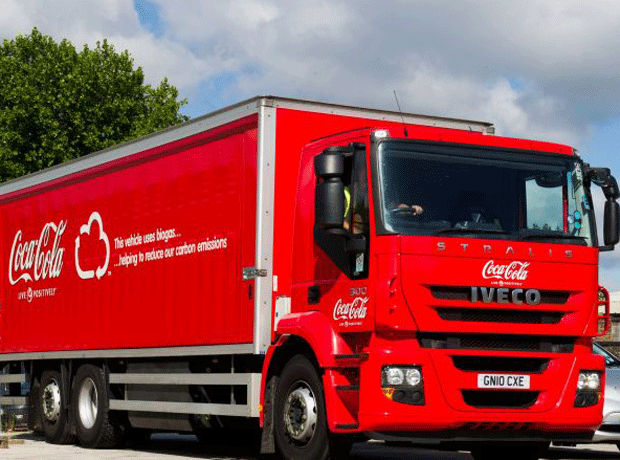
With the nation turning to wind turbines and smart grids, cars going electric, buildings getting green refits and IT driving ever-greater business efficiencies, the road freight sector must look to outsiders like an oil-burning dinosaur by comparison.
After all, it still runs on diesel, saves fuel in small, hard-won increments and seems unlikely ever to evolve from using fossil fuels. But while the whiff of the oily rag may still linger, the scent of change is in the air.
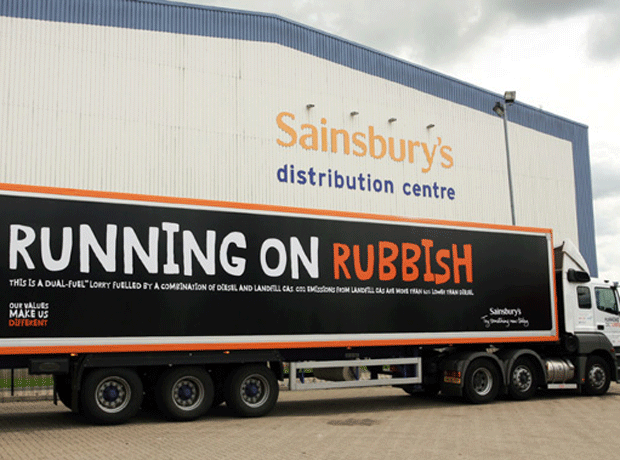
Volvo Methane Diesel
size/power: 13-litre, 460hp dual fuel
efficiency: 30%-40% higher energy efficiency
benefit: 25% lower fuel consumption, lower emissions & particulates
special skill: Cuts carbon by 70% if using biomethane
green rating: 8
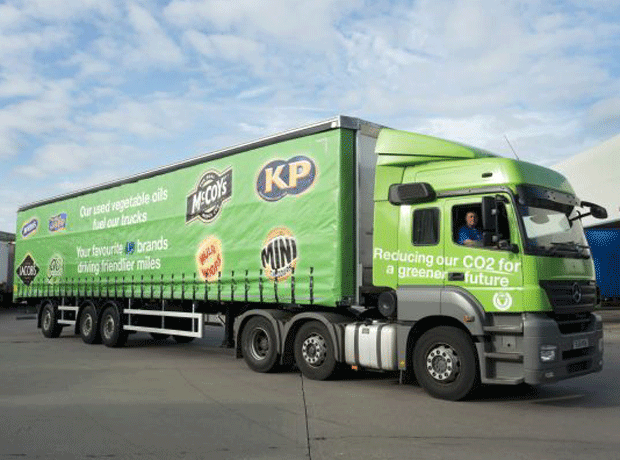
Cartwright/UB long trailer
size: Trial 14.6m trailer
efficiency: 15% greater payload
benefit: Cutting UB’s vehicle movements and miles
special skill: Carries 60 pallets not 52
green rating: 7

Mercedes Atego BlueTec Hybrid
size/power:12t, 4.8-litre, 218hp
efficiency:15% less fuel
benefit: 2mpg better fuel consumption, low noise and emissions
special skill:Lower emissions when run on biomethane
green rating: 6
The big fleets are making great strides cutting their carbon footprints. As our Truck Top Trumps above and over the page reveal, some of the latest vehicles are running at near-optimum efficiency, with one, the concept stage and distinctly Transformer-like MAN Concept S, earning a 10/10 green rating in this expert’s view.
The statistics are no less impressive across the sector as a whole. Carbon emissions have been flat since 1995 despite significant economic growth, while particulate matter has fallen 98% since 1993 despite a 20% increase in volumes, according to Freight Transport Association (FTA) figures. And there’s more to come. Members of the Logistics Carbon Reduction Scheme (LCRS), which account for more than 56,000 commercial vehicles between them, are on track to cut CO2 emissions by 8% by 2015 compared with 2010.
But could further improvements be delivered? And of all of the different options available - particularly when it comes to fuel - which are really the greenest?
It’s hard to overstate how much progress has been made over a relatively short period of time by the haulage sector. Operational efficiencies have played a big part. Driver training together with telematics data, optimised routing and delivery times and procedures, lower maximum speeds, fuller loads, minimal empty running and less engine idling are all contributing to the industry’s eco-push.
“I saw a tractor unit at the Hanover show with a smaller engine and hybrid drive, running the engine at optimal efficiency”
Nick Blake, Mercedes-Benz UK
Trucks are getting more efficient too, as suppliers and operators increasingly opt for low rolling resistance tyres and low-friction engine and gearbox oils. Innovations such as GPS-enabled cruise control, offered in some of the new Scania tractors, are also emerging. Such technology is already having a major impact. Vehicle telematics, for example, enabled LCRS participants to save 14 million HGV miles in 2011. But as the EC looks to HGV operators to play their part in cutting road transport emissions 60% by 2050, there’s much more to be done.
One potentially quick future efficiency win could be achieved if the EC gives its expected approval for aerodynamic devices - known as ‘boat-tails’ - to be added to trailers. Commonly used in the US, they typically save 6% in fuel burned by cutting drag. If Europe’s two million long-haul semi-trailers adopted them, they could collectively save nine million tonnes of CO2.
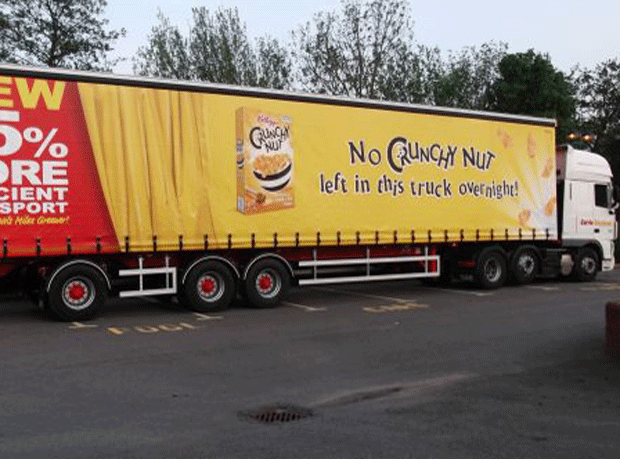
Kellogg’s long semi-trailer
size: Trial 14.6m trailer
efficiency: 15% fewer vehicle miles
benefit: Carries 30 pallets, cutting 240 vehicle movements
special skill: More corn flakes, fewer miles (56,000 less)
green rating:7
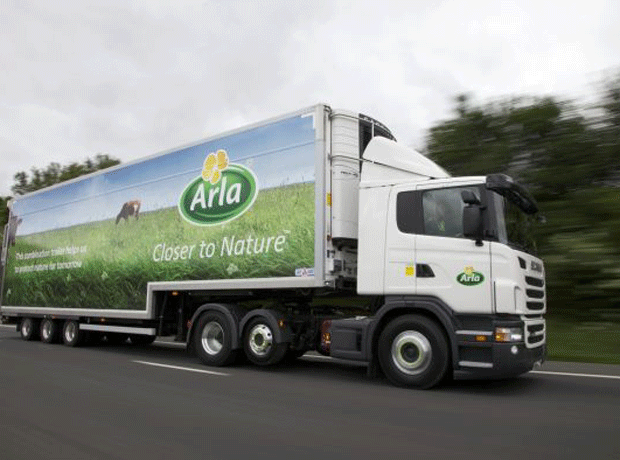
Volvo/Arla HGV hybrid
size/capacity: 26t
efficiency: 60,000 litres of fuel annually per vehicle
benefit: Dual transport of raw milk and finished dairy products
special skill: Combines job of trailer & tanker, reduced empty running
green rating: 9
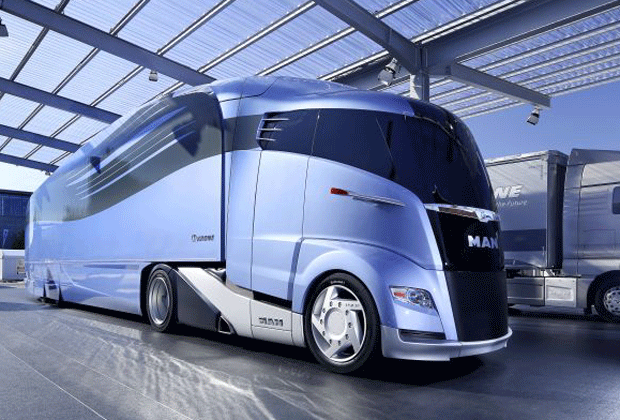
MAN Concept S
size: Streamlined truck & 20m trailer concept
efficiency: 25% more fuel-efficient
benefit: A quarter less emissions and fuel use
special skill: As aerodynamic as a car, looks like a Transformer
green rating: 10
In anticipation, US manufacturer ATDynamics has already signed up UK partner SDC Trailers to sell its TrailerTail Eco50 and Eco120 folding boat tails. Scania trials with shorter 30cm boat tails have cut fuel use by 2%. The industry is hoping revisions to related EC directive 96/53 could authorise longer truck cabs too, offering scope for more fuel savings.
Scania estimates that the use of 2.3m-longer cabs could generate 25% fuel savings. UK operators are already more than a year into a government-supported trial of longer, more capacious 15.65m trailers. Greater payloads mean more cages or pallets per journey, which equals greater carbon savings. Tesco is one of the groups trialling 25 of them and claims that it is seeing increased productivity levels of around 13%.
Engine efficiency
Improvements in engine technology are also in the works. They include better thermal efficiency, rising to 50% from 44% by 2020, together with higher peak cylinder pressures and smaller but more powerful engines that cut friction and weight. Some 11-litre engines are now a match for older 13-litre engines and van engine sizes are shrinking too, typically from 2.5 to 2.2 litres.
The first generation of hybrid diesel-electric vehicles, meanwhile, is showing promise in urban deliveries. Current generation hybrids offer fuel savings of between 15% and 23% and should pay for themselves in about four years, claims Nick Blake, Mercedes-Benz UK’s commercial vehicles head of product engineering.
Second-generation hybrids - perhaps series hybrids with batteries that directly drive the wheels and engines that charge the batteries - could offer the next step-up in efficiency, says Blake. “I saw a tractor unit at the Hanover show with a smaller engine and hybrid drive, running the engine at optimal efficiency, and there may be merit in it.”
Arguably the area with the greatest potential to enable rapid cuts in carbon and other emissions, however, is the emerging fuel of the moment: natural gas. It has a far lower carbon content than diesel, burns cleaner and is cheaper. Fossil gas can be blended with biomethane from waste to make it even greener.
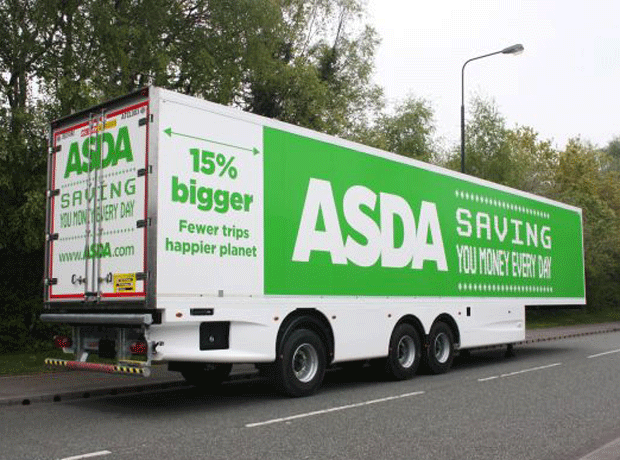
Cartwright dual temperature semi-trailer
size: 15.65m
eficiency: Long trailer trial, +15% capacity
benefit: More payload, fewer vehicle miles
special skill: Cheetah, aerodynamic kit
green rating: 7
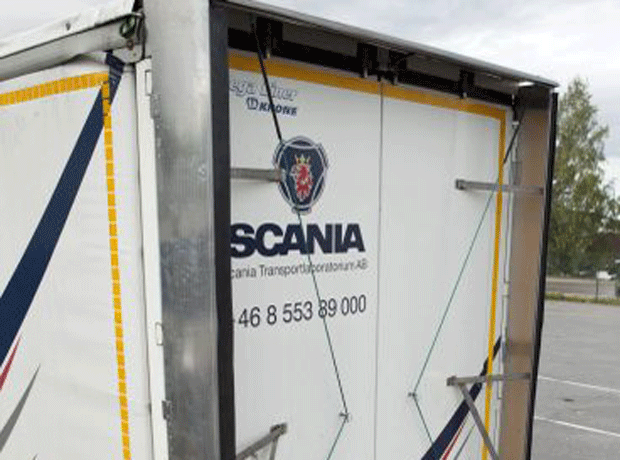
Scania Boat tail trailer (prototype)
size: 30cm on rear of semi-trailer
efficiency: 2% fuel saving
benefit: Improves aerodynamics, cuts drag
special skill: Retrofitted, does not encroach on cargo space
green rating: 5

VW e-Co-Motion concept
size/capacity: up to 40kWh battery
efficiency: ‘Zero’ emissions
benefit: Emissions-free, urban deliveries
special skill: 8.95m turning circle
green rating: 6
Golden age of gas
According to the International Energy Agency, the world is entering a golden age of gas. New drilling techniques look set to unlock vast new reserves of gas globally. Evidence from the British Geological Survey suggests the UK may have decades or even a century of supply in shale formations.
The US, which pioneered shale gas drilling, is already enjoying huge savings and lower carbon emissions as the cost of gas there has plummeted and its use in power generation has soared. The talk now is of entire HGV fleets moving to gas.
In the UK, there is fast-growing interest in dual-fuel engines - natural gas and diesel - particularly for long-distance operations, says Blake. “At 120,000 miles a year per vehicle, you’re likely to see a payback within about two years.”
Limited gas fuelling infrastructure may be holding up wider adoption, but that is changing. Operators are opting to install their own gas fuelling facilities while the Technology Strategy Board is helping fund a UK network of public fuelling depots.
Gasrec opened its bio-LNG fuelling facility in May at Daventry to add to existing public gas facilities at locations including Crewe and Crick. Another is the proposed LNG facility on the Isle of Grain.
Rachel Dillon, the FTA’s climate change policy manager, believes gas, especially biomethane, is emerging as a viable greener alternative or complement to diesel, especially for HGV trunking. “For the transport sector, gas and ultimately biomethane are the only workable solutions,” she argues,
“Our early adoption of this technology is helping to significantly reduce our CO2 emissions and future proof our supply”
Nick Davies, Sainsbury’s
Sainsbury’s was an early convert to bio-methane, becoming the first supermarket to make daily food deliveries using a biomethane-powered lorry in 2008. A year later, the retailer ran a successful trial of five dual-fuel vehicles as part of its 20x20 Sustainability Plan. The trial was so successful that earlier this month Sainsbury’s announced it had extended its dual-fuel fleet to 51 vehicles, with each vehicle saving 41 tonnes of CO2 entering the atmosphere each year.
“Our trial of dual-fuel was very successful and gave us the confidence to extend the fleet to become one of the largest in the country,” says Nick Davies, Sainsbury’s head of transport operations. “Our early adoption of this technology is helping to significantly reduce CO2 emissions and future-proof our fuel supply, which are both fundamental to the long-term sustainability of our business. We have already achieved a number of efficiencies across our transport operations, including cutting almost eight million kilometres in three years, and our dual-fuel fleet will also play a key role in delivering our no-waste-to-landfill policy.”
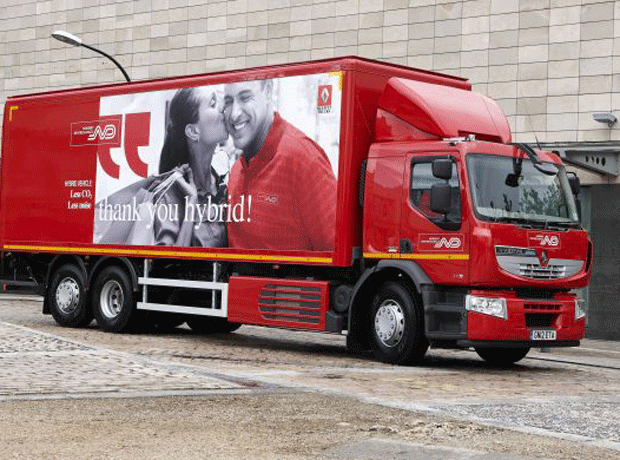
Renault Hybrys
size/capacity: 26t
efficiency: 20% more fuel-efficient
benefit: Lower emissions, less noise
special skill: 50% quieter than pure diesel equivalents
green rating: 7

Iveco Stralis (gas)
size: 26t
efficiency: CEE enjoyed a GHG saving of 60.7% in trials
benefit: Lower emissions, reduced fuel costs
special skill: Significantly cuts down on emissions
green rating: 8
Hindering uptake
But despite the support of powerful players like Sainsbury’s, the ascendance of gas is not yet assured. The price of gas, the fact that operators can’t take advantage of renewable energy incentives for biomethane, together with uncertainty over the duty levied on gas after 2015 are all causes for concern. “Operators need a longer period for that duty differential, in some cases up to 10 years to enable them to make further investments,” says Dillon.
That’s not to say that gas isn’t finding champions. The John Lewis Partnership has been operating dual-fuel trucks for more than a year now. “It’s going pretty well so far,” says Justin Laney, general manager of the John Lewis Partnership fleet.
If gas does live up to its promise, the partnership’s entire 2,700-strong fleet could eventually convert, but some questions remain. The retailer is already studying overall emissions to ensure methane leakages are minimal. “We also have a couple of concerns including the future availability of biomethane and the [future] differential in fuel duty. We also need to weigh up [whether to opt for] CNG or LNG, but we do see gas as the way forward,” says Laney.
“The jury is out on whether we are heading towards 100% gas. It will depend in part on big strategic factors”
John Baldwin, CNG Services
Another likely roadblock is the fact that current dual-fuel engines don’t meet the looming Euro-6 standards, says John Baldwin of biomethane and natural gas specialist CNG Services. Pure gas vehicles may offer the longer-term solution, according to Baldwin, who points out that Scania will have a 9-litre 350hp engine this year and by 2015 most manufacturers will be offering 400hp 100% gas engines. “The jury is out on whether we are heading towards 100% gas,” he says. “It will depend in part on big strategic factors, but it does seem that gas is the long-term alternative to diesel.”
Baldwin is one of a growing number of industry experts who believe that ramping up biomethane production and investing in high-pressure fuelling infrastructure that taps off the national gas grid offers an efficient, low-carbon path for the UK freight transport sector. “The pipes are there and if it turns out that the UK has the shale resources suggested, we would be mad to keep importing diesel,” he says.
We’re still a long way from realising this scenario, but all of the signs suggest that the food and drink industry is well down the road towards delivering further carbon cuts in the future.


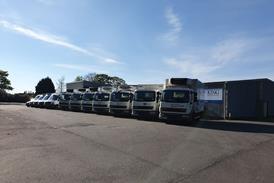






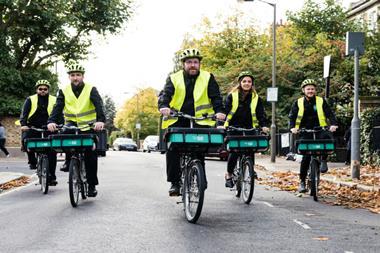




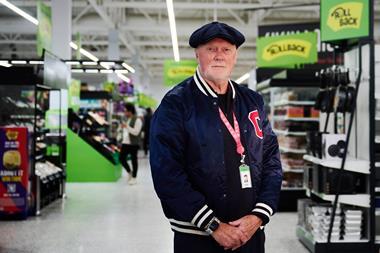
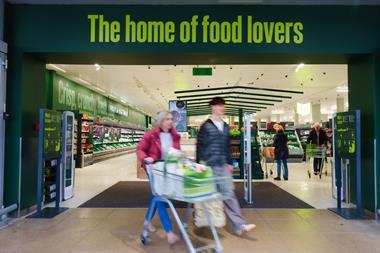


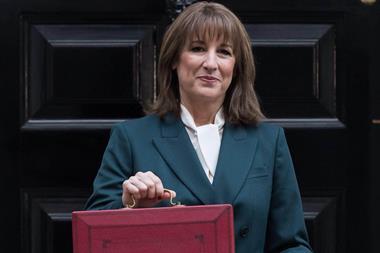
No comments yet